Key takeaways:
- Selective mutism is an anxiety-driven response, requiring patience and empathy from both educators and families to foster a supportive environment.
- Creating safe spaces in classrooms, along with the use of alternative communication methods, can significantly help children with selective mutism engage without pressure.
- Collaboration among teachers is essential; sharing experiences and strategies can lead to tailored approaches that accommodate the unique needs of each student.
- Open communication with families encourages a deeper understanding of students’ struggles and builds trusting relationships that support student well-being.

Understanding Selective Mutism
Selective Mutism is often misunderstood. I recall meeting a child who would speak freely at home but freeze up in social settings, leaving many puzzled about his quiet demeanor. It made me wonder—how many others find themselves stuck in this silent struggle, wanting to share their thoughts but feeling unable to find their voice in certain situations?
From my perspective, selective mutism isn’t just about refusing to speak; it’s an anxiety-driven response deeply embedded in a child’s psyche. For instance, I’ve seen that when children feel overwhelmed in a new environment, their instinct is often to withdraw. This reaction can evoke sympathy from teachers and peers, but it can also lead to feelings of isolation for the child. Have you ever thought about how powerful words can be, yet how paralyzing silence might feel for someone battling this condition?
What can often be overlooked is the emotional burden that selective mutism places on both the child and their family. I remember a parent sharing the frustration of wanting to hear their child’s voice, yet understanding that forcing them to speak could backfire. These moments reinforce the importance of patience and empathy in nurturing a supportive environment—because sometimes, a smile or a reassuring presence can speak volumes when words cannot.
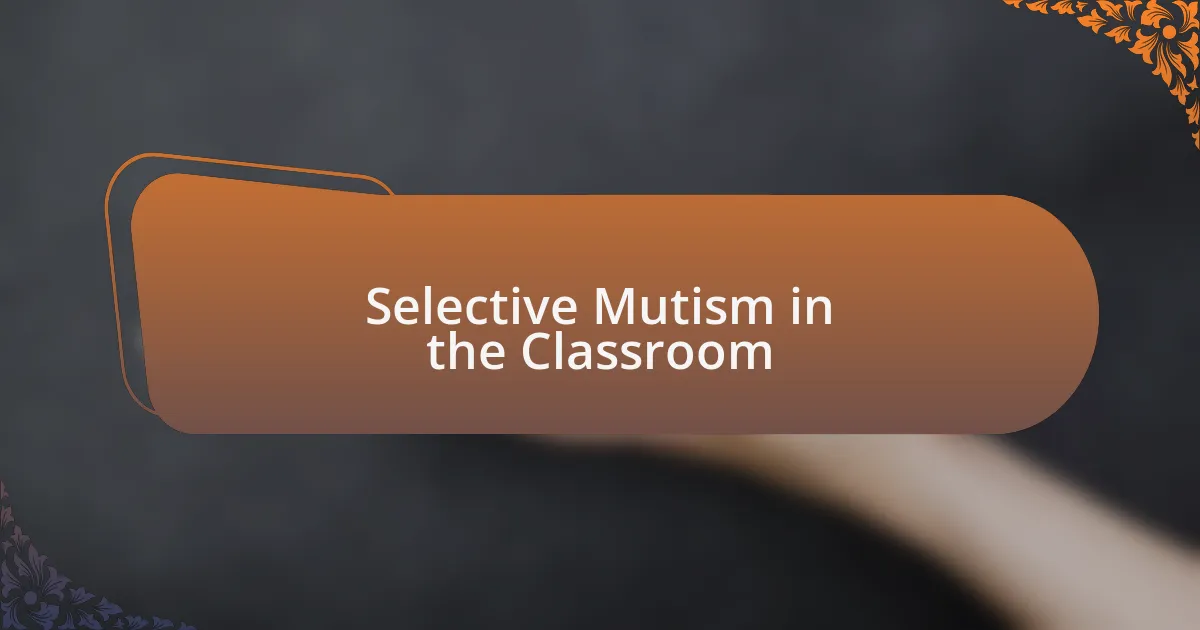
Selective Mutism in the Classroom
Selective mutism in the classroom can create unique challenges for both the student experiencing it and their educators. I once observed a teacher who implemented a quiet corner in her classroom, a safe space where a child could take a breather when feeling overwhelmed. This seemingly small gesture made all the difference. It not only helped the child feel secure but also allowed them to gradually engage with peers when they were ready. Does your classroom environment currently offer such accommodations?
I’ve also noticed that the way teachers approach discussion can significantly impact a child with selective mutism. In one instance, a compassionate educator used visual aids and small group activities to encourage participation without pressuring the child to speak out loud. The child, feeling less anxious, eventually found ways to communicate their thoughts through drawings and written notes. Isn’t it fascinating how different forms of expression can bridge the gap when words seem too daunting?
Creating a supportive classroom that fosters understanding and patience is vital. I’ve experienced how positive reinforcement, whether through praise for small achievements or creating a routine that acknowledges each child’s comfort level, can cultivate an atmosphere where silence is respected rather than judged. How often do we consider the profound effect this type of inclusive environment can have on a child struggling with selective mutism?
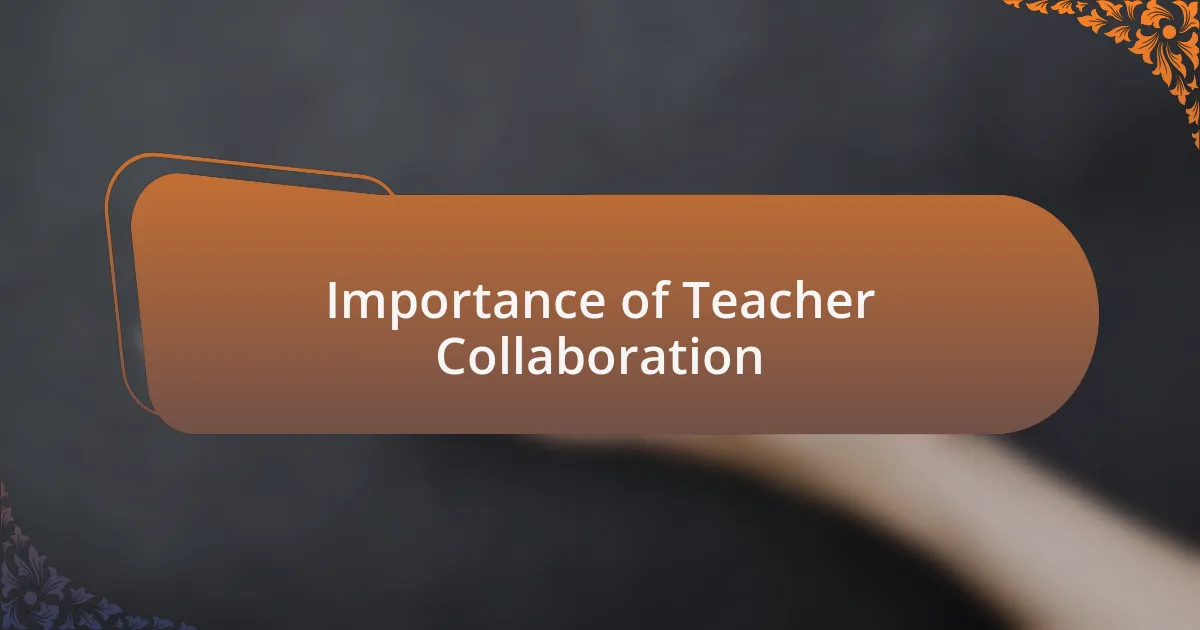
Importance of Teacher Collaboration
Collaboration among teachers is crucial when addressing selective mutism. In my experience, when educators share strategies, like forming a support network, it creates a unified approach that the child can rely on across different settings. Have you ever witnessed how a cohesive front among educators can ease a child’s anxiety and foster their confidence?
I’ve learned that regular communication between teachers can also lead to meaningful observations about a student’s behavior in various situations. For instance, one teacher noted that a student was more vocal during art class but quiet during group discussions. This insight prompted a tailored approach that focused on using art as a bridge for communication in other contexts. Isn’t it interesting how seemingly unrelated subjects can reveal so much about a child’s comfort levels and strengths?
Moreover, involving teachers in the development of individualized strategies ensures that they feel empowered and knowledgeable. I’ve seen the difference it makes when teachers attend professional development sessions together, discussing research on selective mutism and sharing their experiences. This collective knowledge fosters an environment where every educator feels equipped to support the child meaningfully. How often do we take the time to learn together to create an inclusive environment for our students?
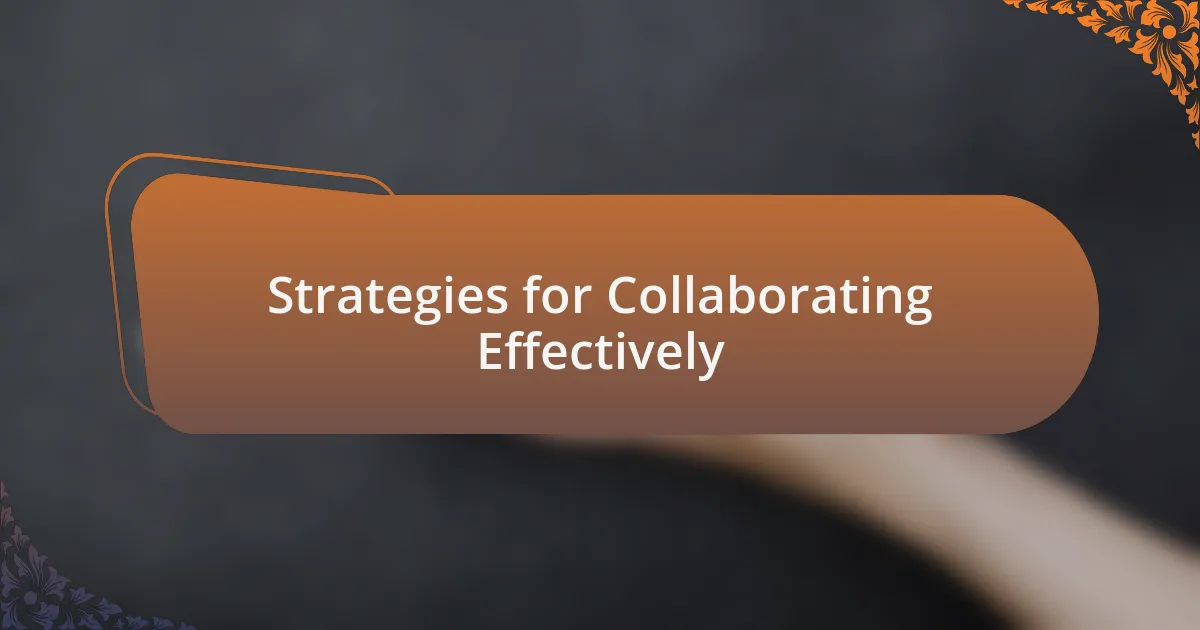
Strategies for Collaborating Effectively
One effective strategy I’ve found is establishing regular check-ins among teachers. In my own practice, I facilitated weekly meetings where we could discuss our observations and brainstorm new approaches for a student who struggled with speaking. It was incredible to see how a simple 30-minute conversation could lead to groundbreaking methods for encouraging dialogue in the classroom. Have you ever experienced the magic of a team coming together to solve a challenge?
I also believe in the power of shared resources. When teachers create a centralized resource bank—like a digital folder where we can upload activities, articles, or even videos— it becomes a treasure trove of ideas. In my experience, I’ve seen teachers rush to that bank for inspiration when a particular approach isn’t working. It’s a small step, but it fosters a culture of mutual support and innovation. Doesn’t that collaborative spirit just breathe new life into our teaching strategies?
Equally important is to provide specific feedback to one another after implementing new strategies. I remember when a colleague tried using visual aids to prompt a quiet child in her class. Afterward, we gathered to discuss the results. Not only did we celebrate successes, but we also examined what didn’t work and why. This reflection allowed us to refine our approaches further. How often do we give ourselves the space to reflect collaboratively rather than individually?
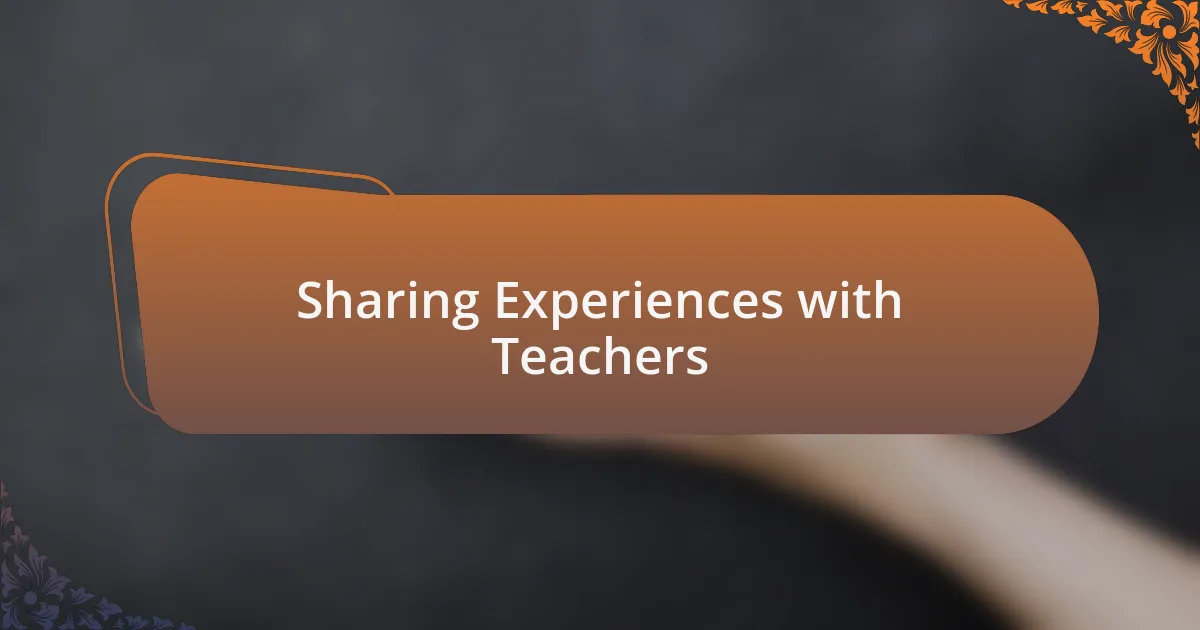
Sharing Experiences with Teachers
Sharing experiences with teachers can be a transformative process. I recall a time when I shared my own challenges with a teacher who was struggling to reach a student with selective mutism. The conversation opened doors to creative approaches we hadn’t considered before, like utilizing storytelling to help the student express themselves without pressure. Have you ever noticed how one shared experience can illuminate pathways we were blind to before?
In another instance, we implemented a peer-observation day where teachers could observe each other’s classrooms. Seeing how different educators interact with students created a wealth of ideas for integrating new strategies to support communication. I felt energized as we dissected those observations after, discovering fresh angles to tackle our challenges. Can you imagine the possibilities when we learn from each other?
Listening to teachers share their experiences allows for an honest exchange that often highlights common struggles. I remember gathering informal anecdotes during lunch, which fostered a sense of camaraderie and reminded me that we are not alone in this journey. Have you ever felt that sense of relief when sharing vulnerabilities? It’s in these moments of openness that we often find the most effective methods to support our students.
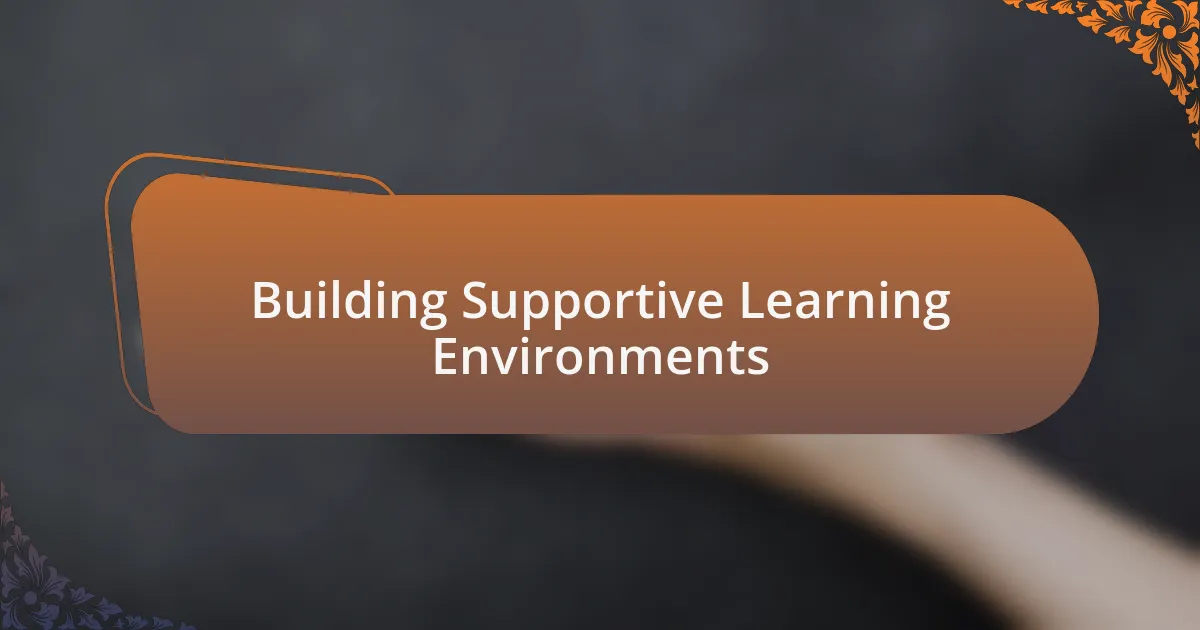
Building Supportive Learning Environments
Creating supportive learning environments is essential for students with selective mutism. I once had a colleague who transformed her classroom into a sanctuary of understanding and empathy. By incorporating calming visuals and routine check-ins, she made her students feel safe enough to express themselves, even if it took time. Have you considered how physical space affects a student’s comfort level?
I also learned about the impact of fostering strong relationships not only between students and teachers but also among peers. During a group project, I noticed how my students thrived when paired with thoughtful buddies who were patient and attentive. It struck me that sometimes the smallest gestures, like a friendly nod or a supportive smile, can significantly bolster a student’s confidence. Isn’t it fascinating how connection fosters courage?
I have found that structured activities, like small group discussions, can significantly lower anxiety for students with selective mutism. I remember once introducing a ‘talking circle,’ where students took turns sharing thoughts without pressure. The relief and eagerness on their faces were heartwarming, showcasing how a supportive framework can encourage even the quietest voices. What if we viewed our classrooms as vessels for collaboration and understanding, rather than just places to deliver lessons?
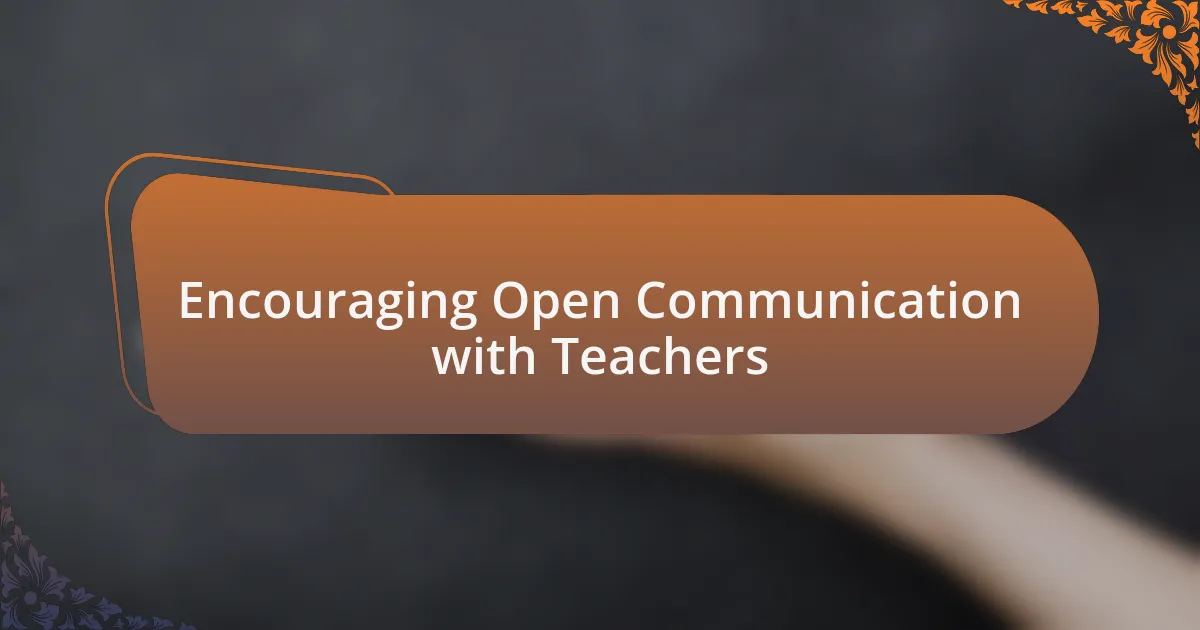
Encouraging Open Communication with Teachers
Encouraging open communication with teachers starts with creating a safe space for dialogue. I recall a moment when a parent approached me, sharing their child’s struggles with speaking up in class. Their vulnerability reminded me of how important it is for educators to maintain an open-door policy, allowing families to express concerns without fear of judgment. How often do we take the time to listen actively, rather than just hearing words?
I’ve also seen the power of consistent communication tools, like shared journals or weekly updates. In one instance, I implemented a simple feedback notebook where students could jot down their feelings about classroom activities. This practice not only opened lines of communication but also fostered a deeper connection with my students. Could regular check-ins be the bridge we need to understand our students better?
Moreover, building relationships through informal conversations can significantly reduce anxiety around communication. I remember after school chats, where I would ask my students about their hobbies or interests. These small moments of connection made a world of difference, as students often felt more comfortable opening up about their thoughts and fears when they saw me as more than just a teacher. Isn’t it remarkable how genuine curiosity can cultivate trust?